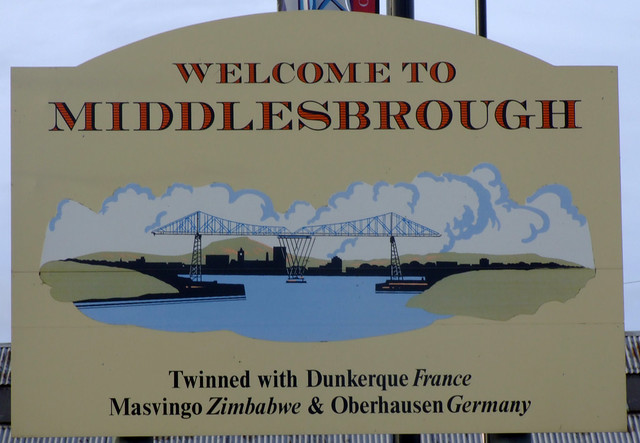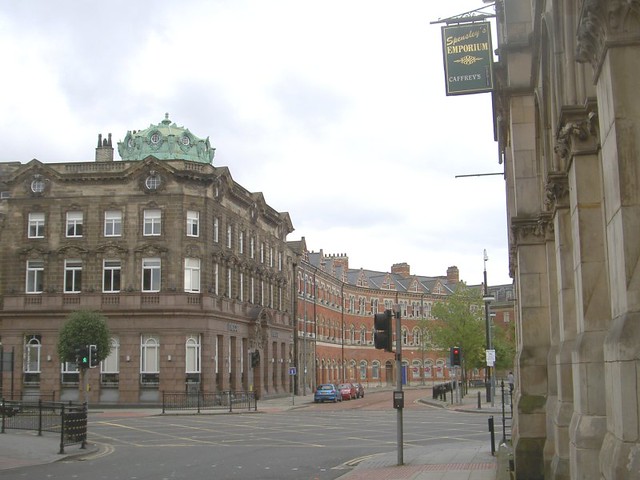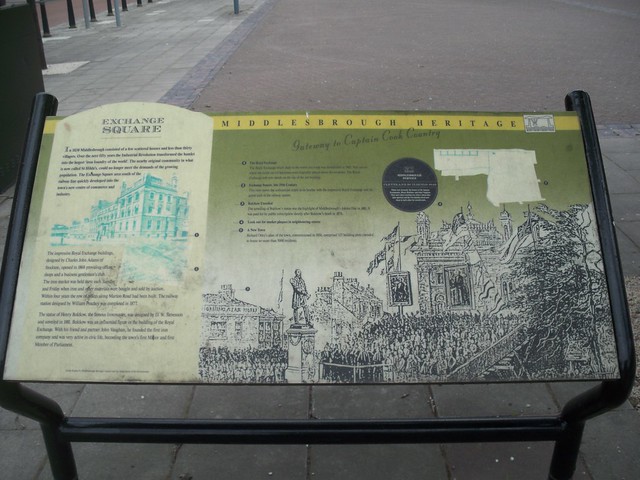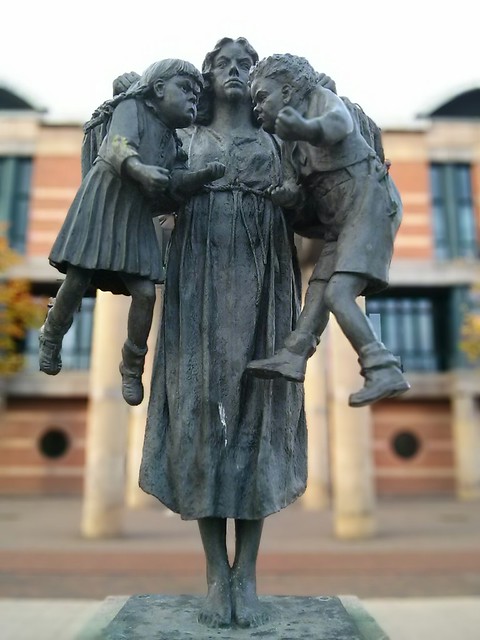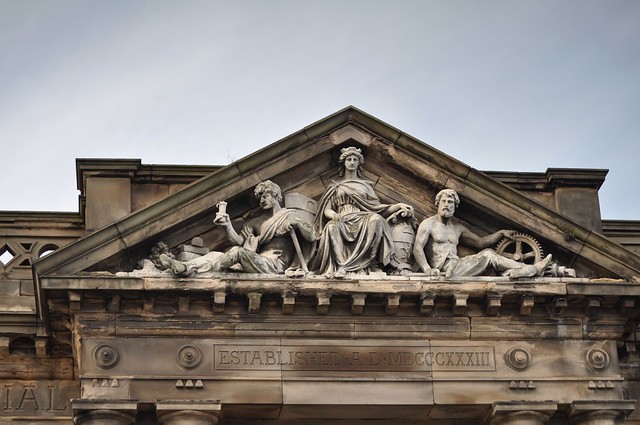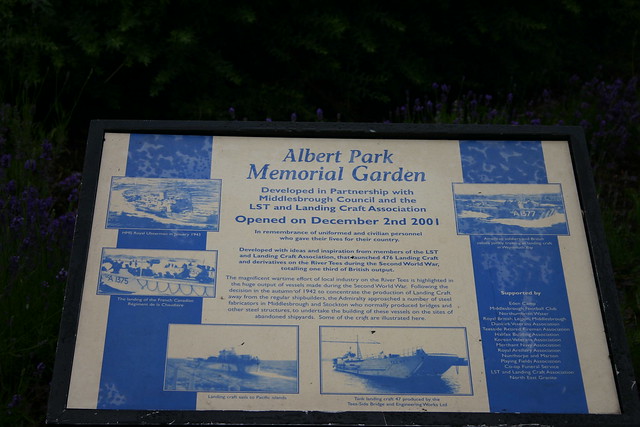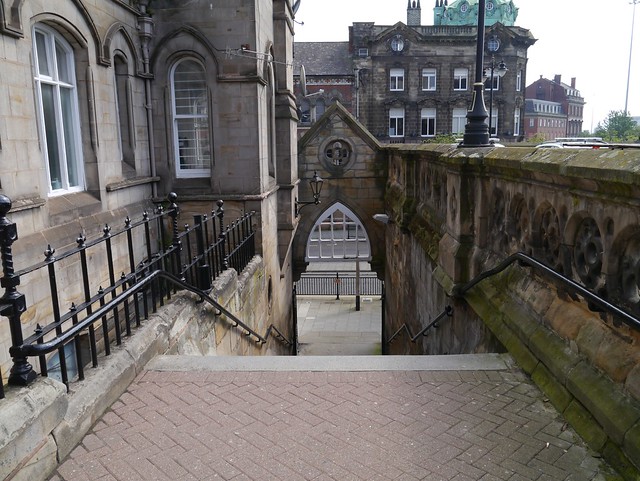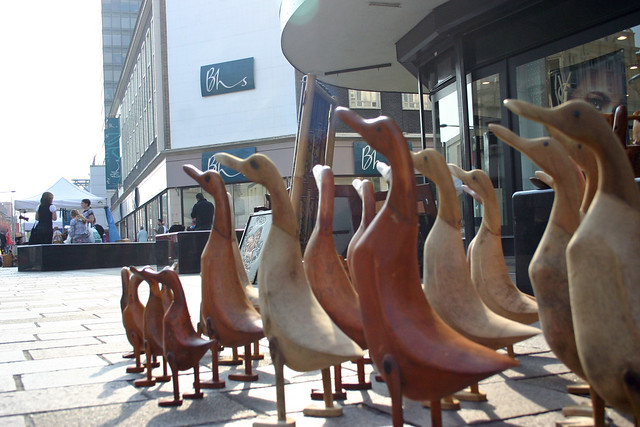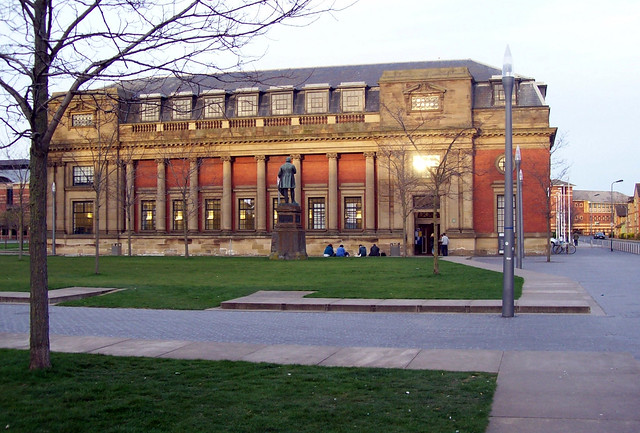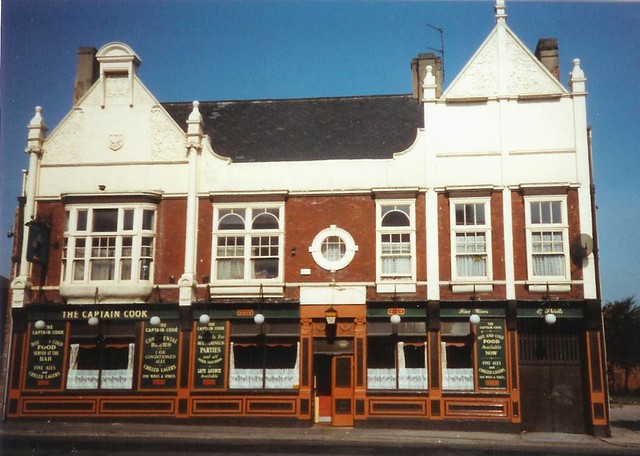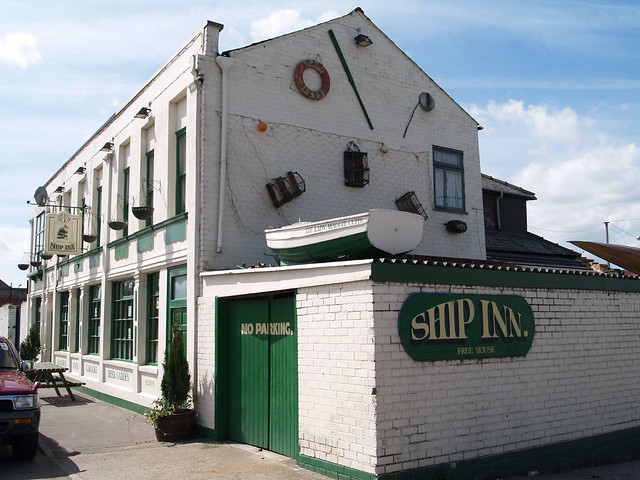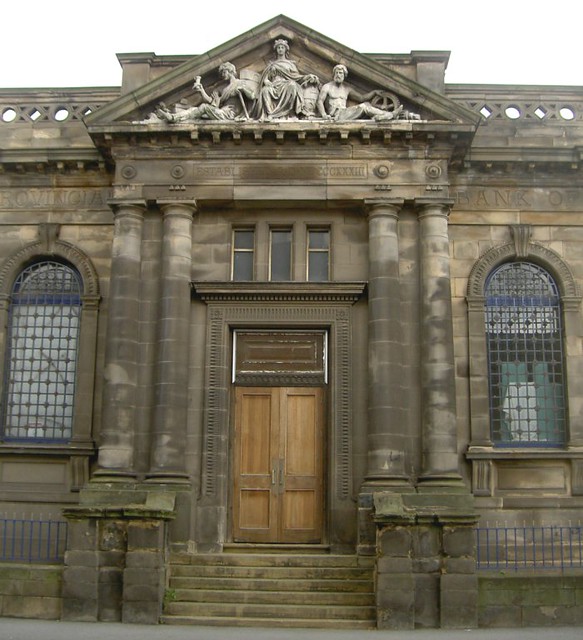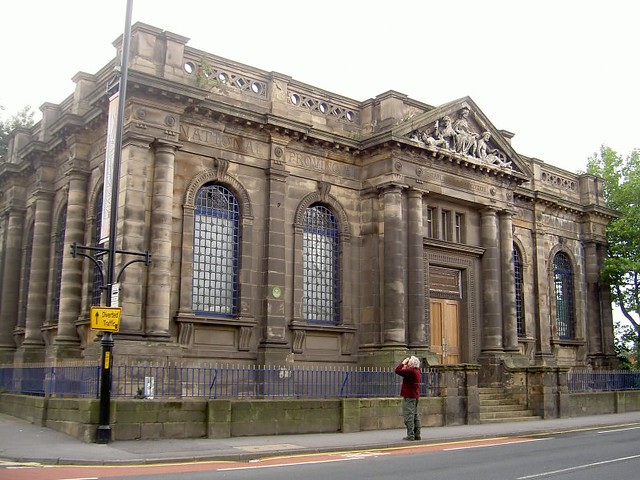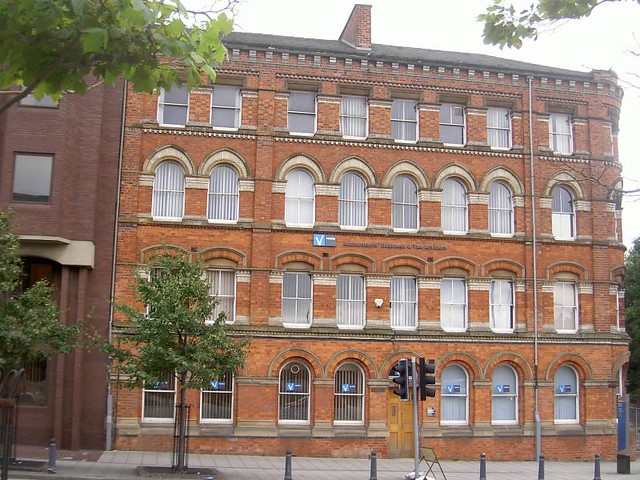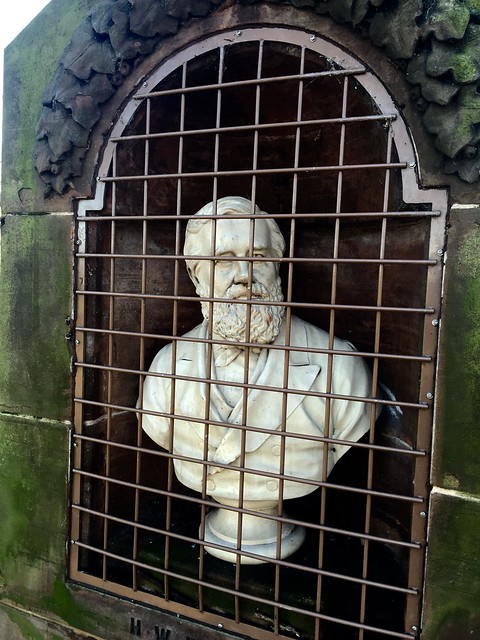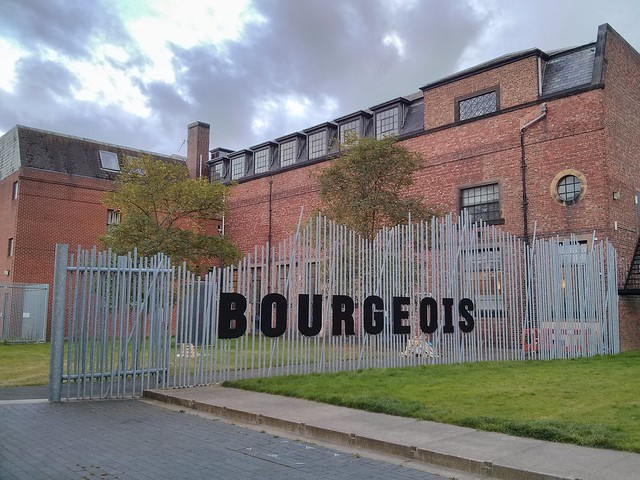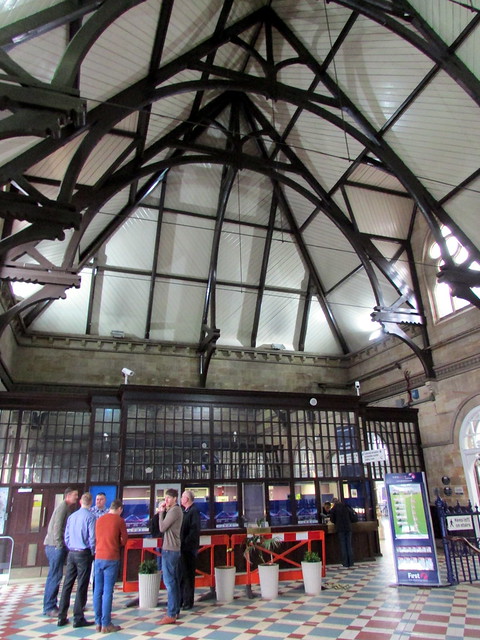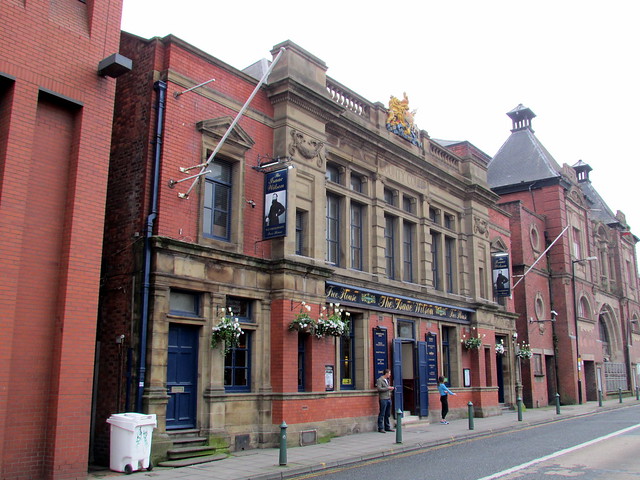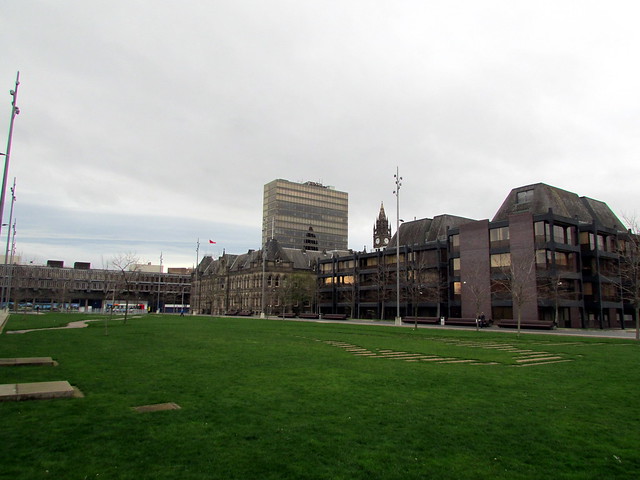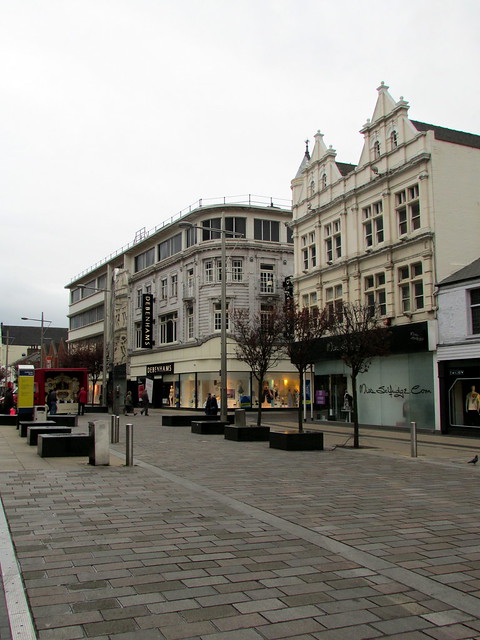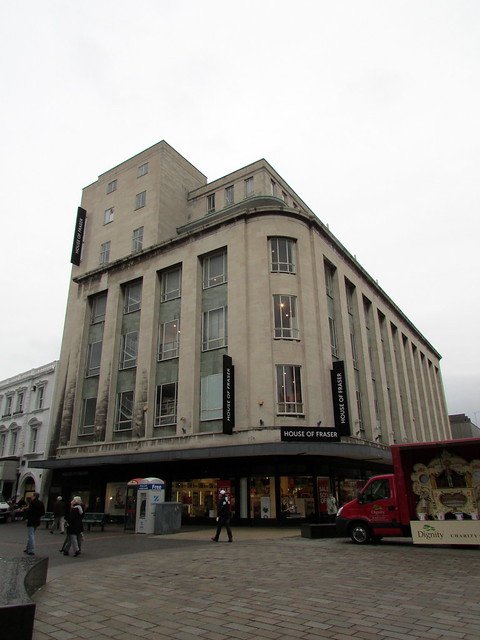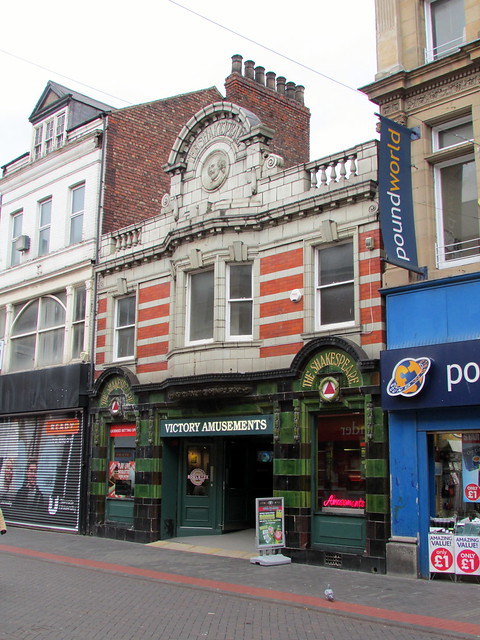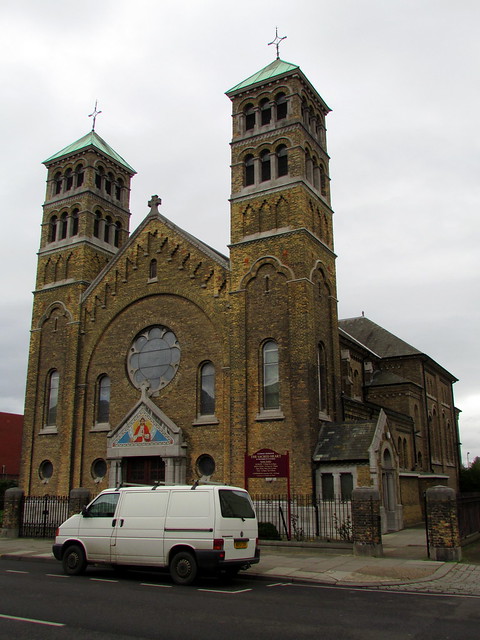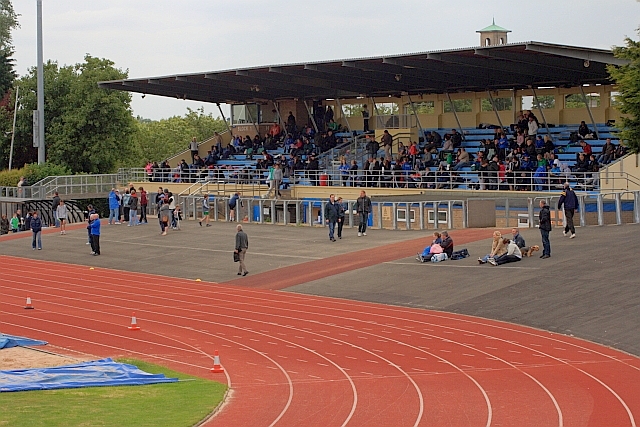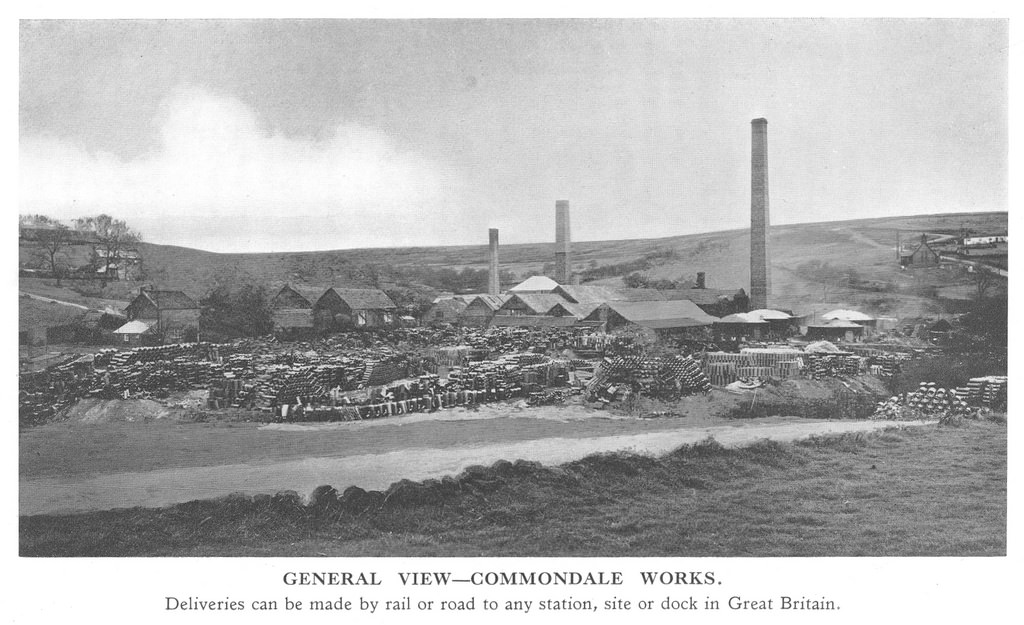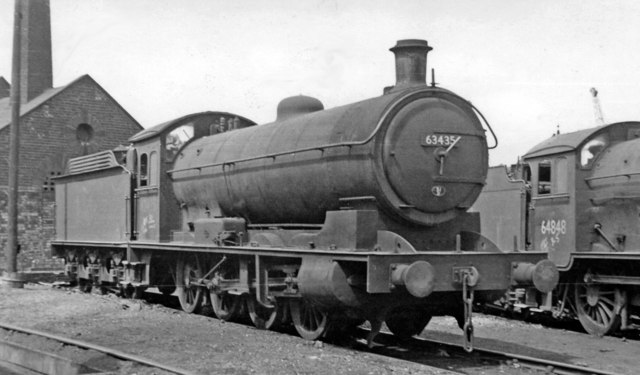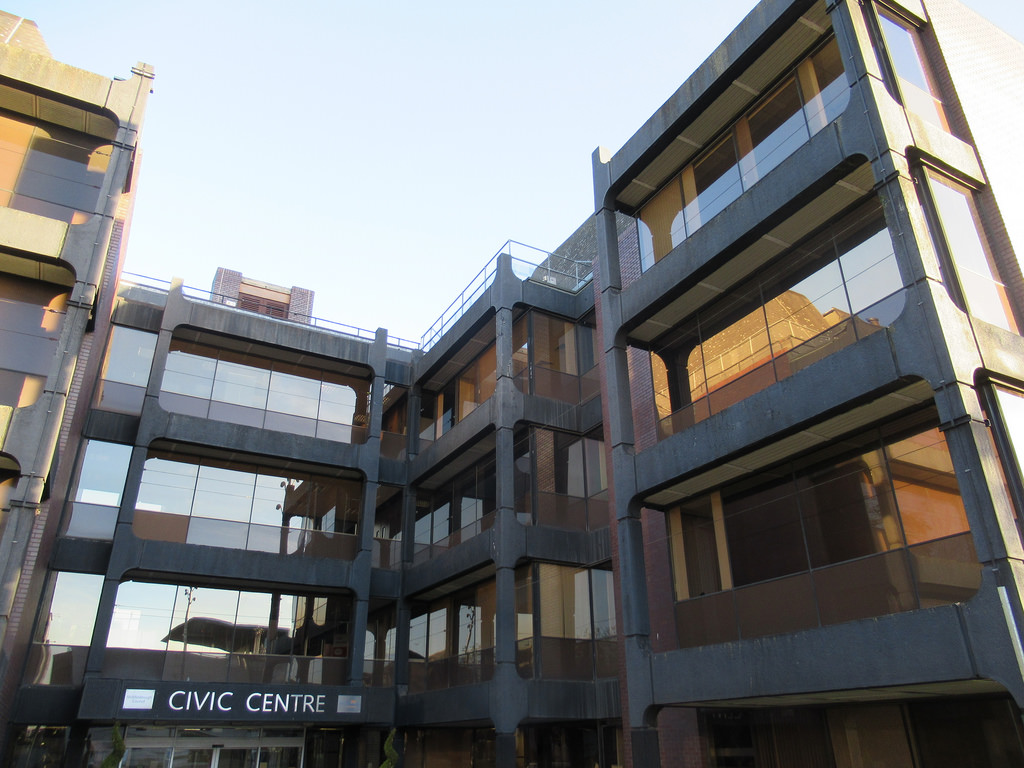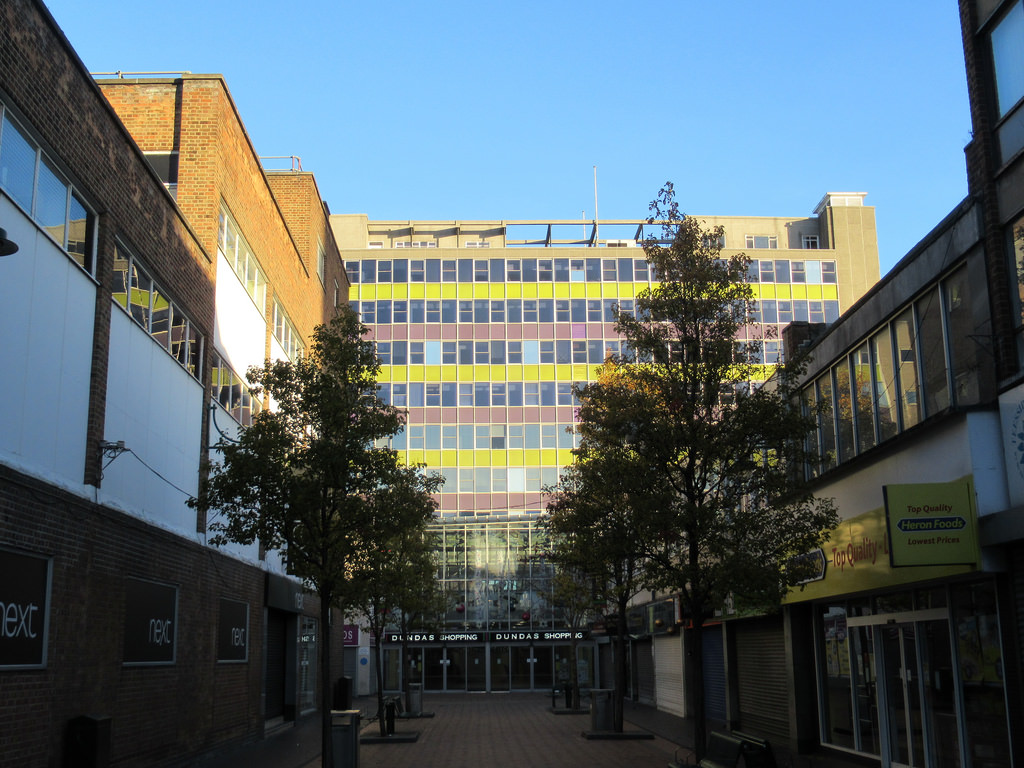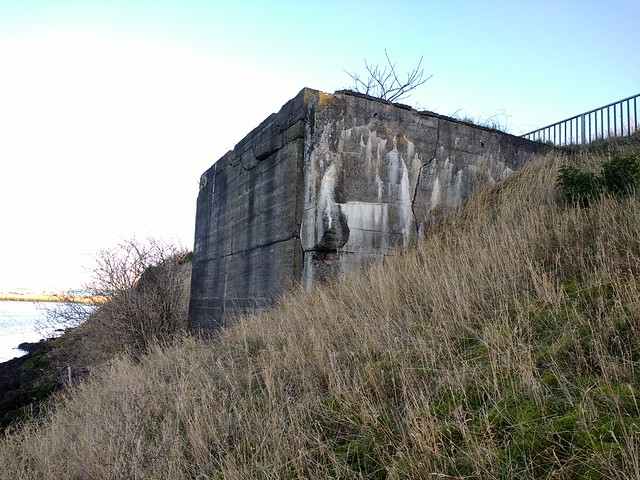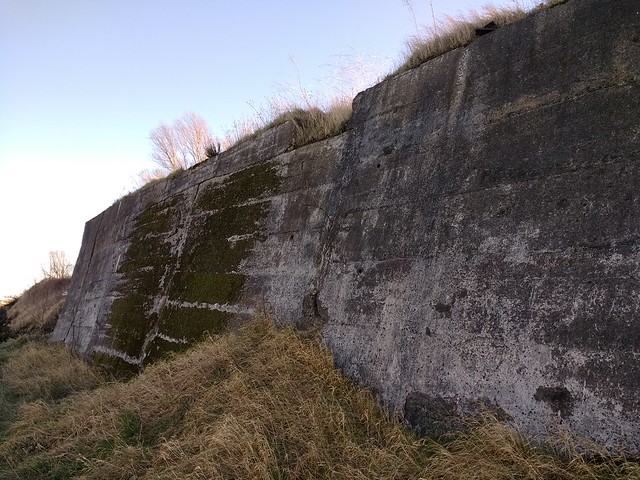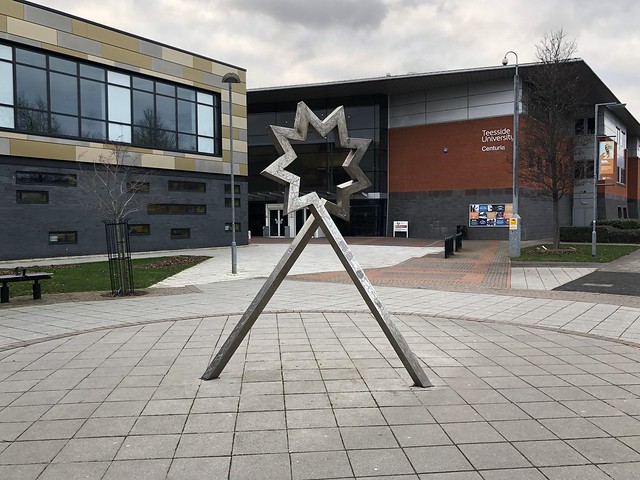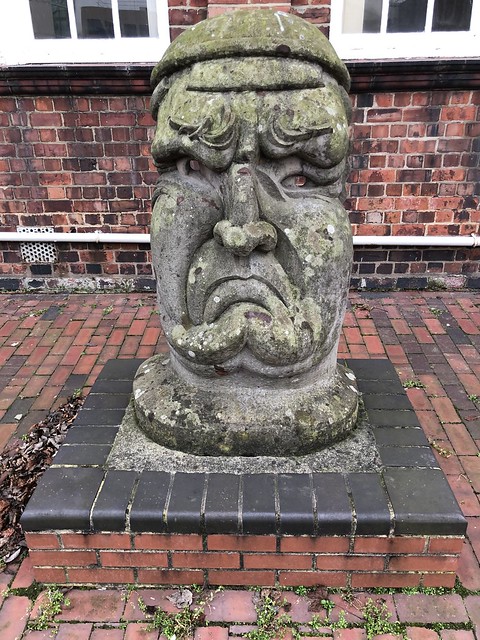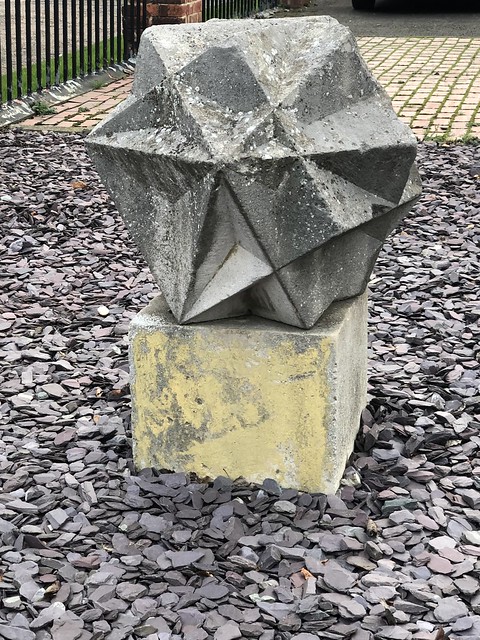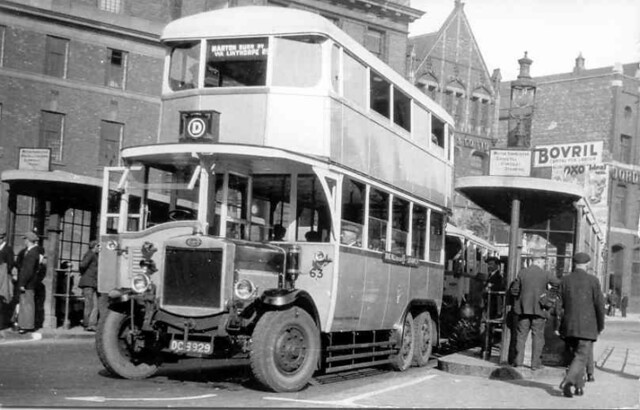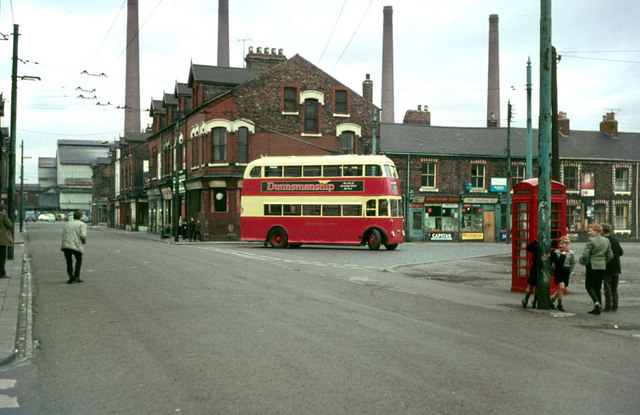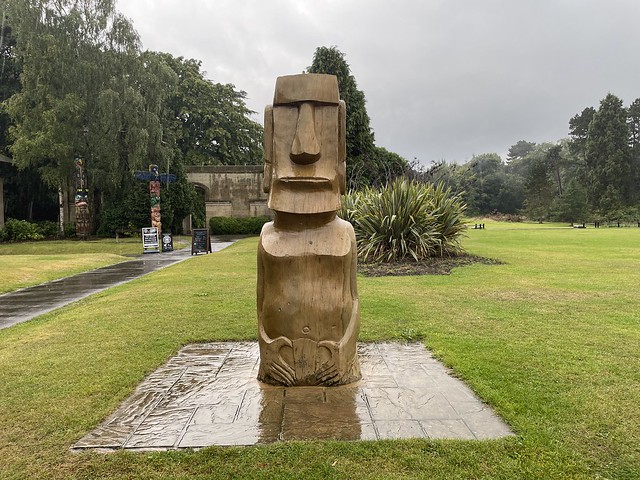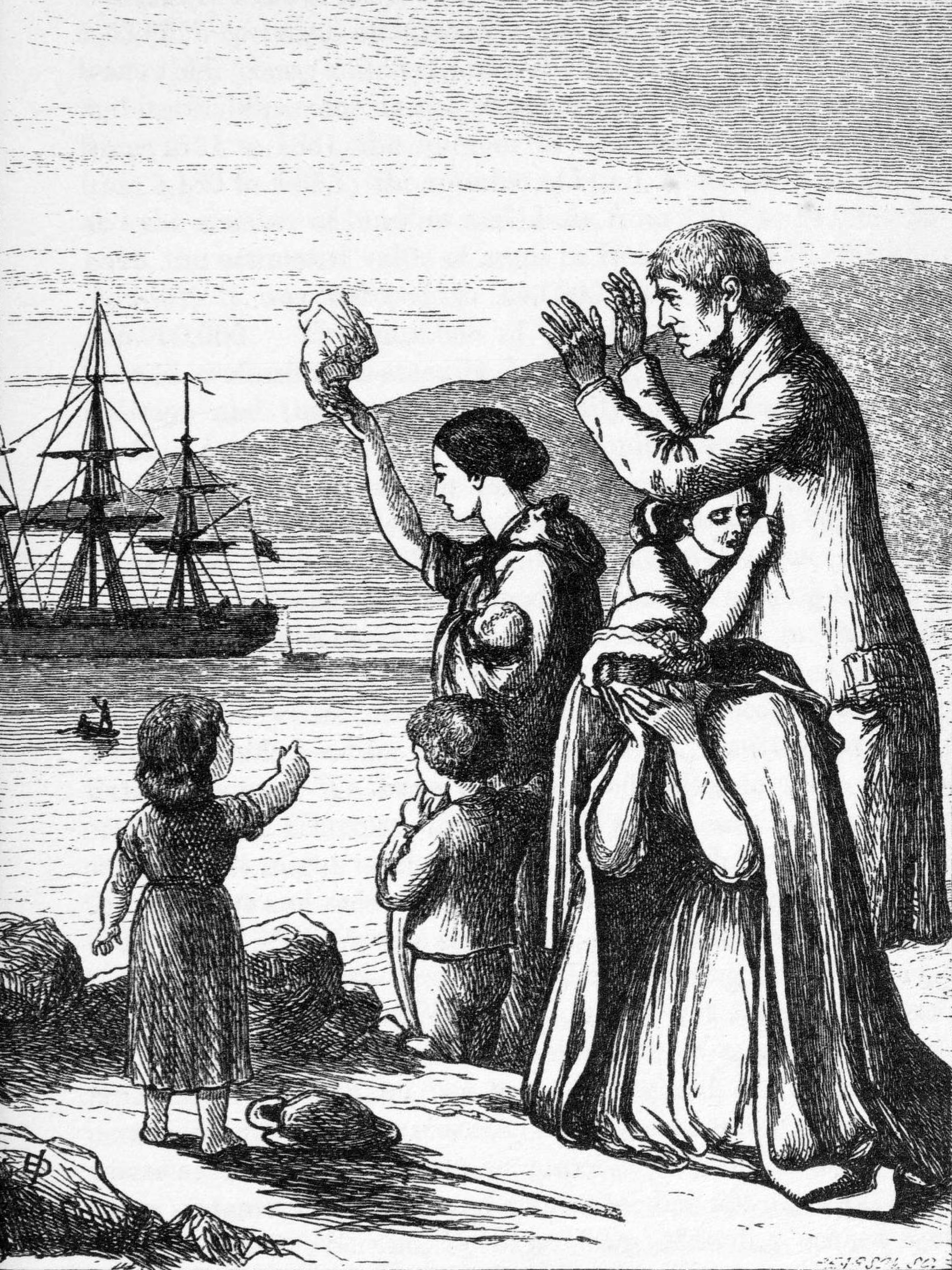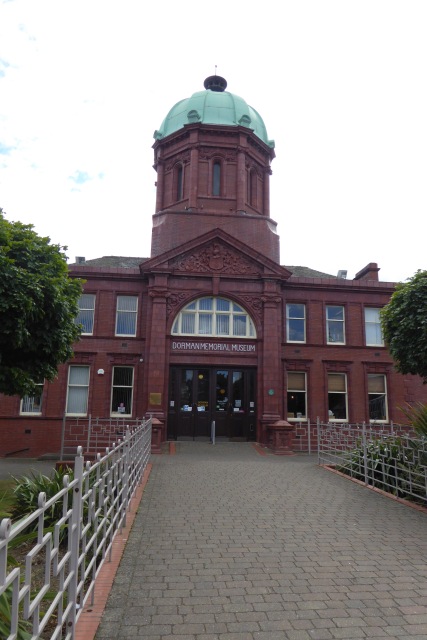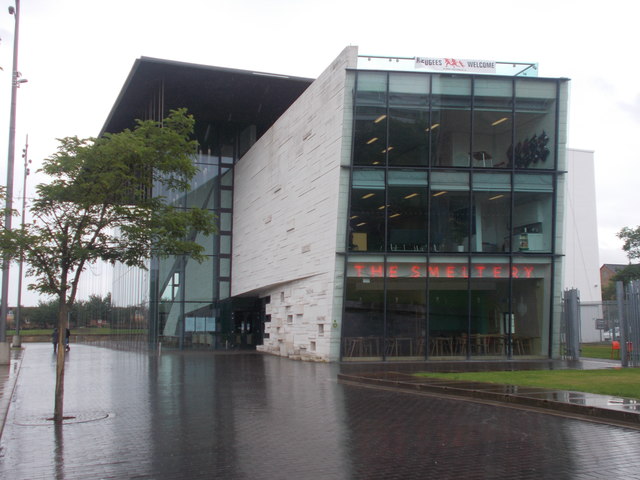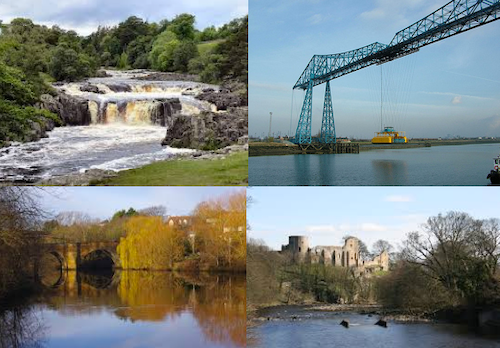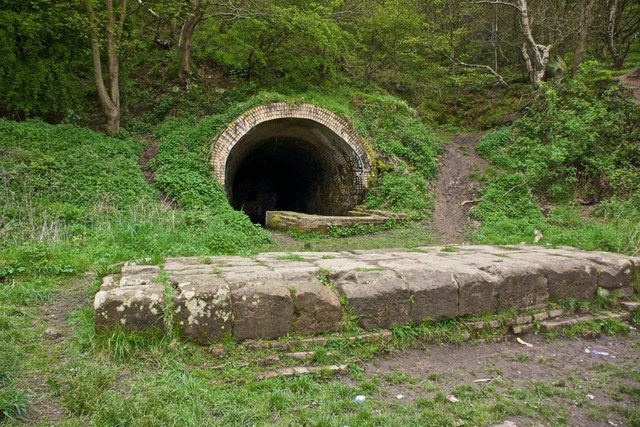Topics > Tees Valley > Middlesbrough
Middlesbrough
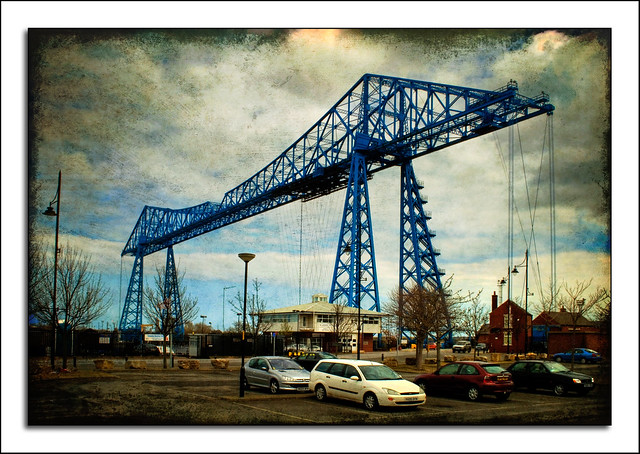 "Middlesbrough is an almost unparalleled example of rapid growth...It dates from 1829, when its site was occupied by a solitary farmhouse, representing the ancient priory of St. Hilda; in that year its erection as a port for the shipment of coal was suggested by the construction of the Stockton and Darlington Railway, which would bring the great coal fields of Durham into easy access. The first ship was freighted with coal at Middlesbrough in June 1831. Originally founded as a coal exporting port, Middlesbrough quickly became, with the discovery of the mineral riches of the Cleveland district, the principal seat of the English iron trade. This trade dates from 1840, when the works of Messrs. Bolckow & Vaughan were established on the banks of the Tees...." (JG Bartholomew, 1905)
"Middlesbrough is an almost unparalleled example of rapid growth...It dates from 1829, when its site was occupied by a solitary farmhouse, representing the ancient priory of St. Hilda; in that year its erection as a port for the shipment of coal was suggested by the construction of the Stockton and Darlington Railway, which would bring the great coal fields of Durham into easy access. The first ship was freighted with coal at Middlesbrough in June 1831. Originally founded as a coal exporting port, Middlesbrough quickly became, with the discovery of the mineral riches of the Cleveland district, the principal seat of the English iron trade. This trade dates from 1840, when the works of Messrs. Bolckow & Vaughan were established on the banks of the Tees...." (JG Bartholomew, 1905)
Just some of the things to do and see in Middlesbrough...
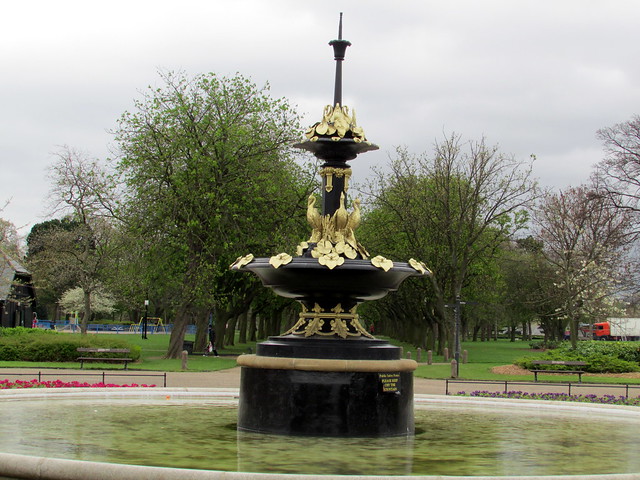 |
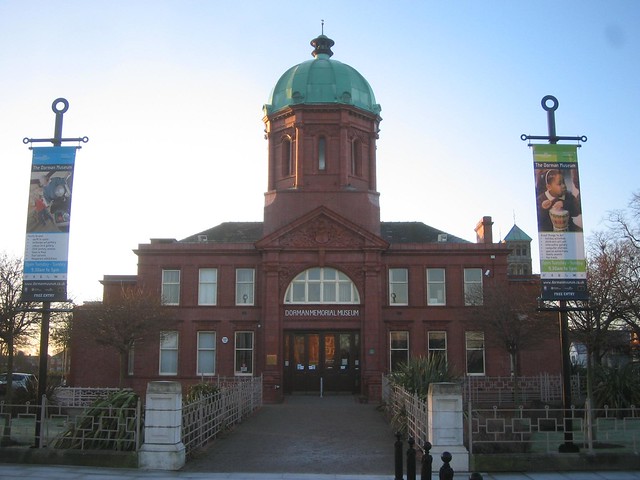 |
 |
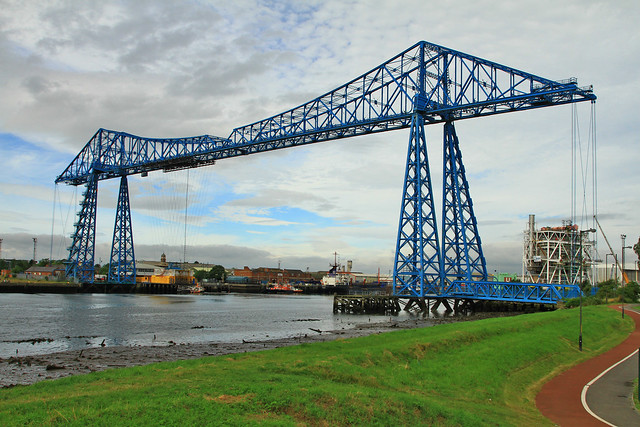 |
 |
| Albert Park | Dorman Museum | Captain Cook Birthplace | Transporter Bridge | Newport Bridge |
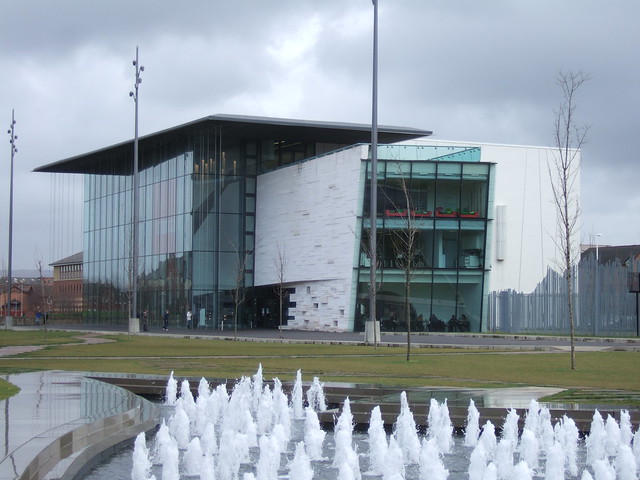 |
 |
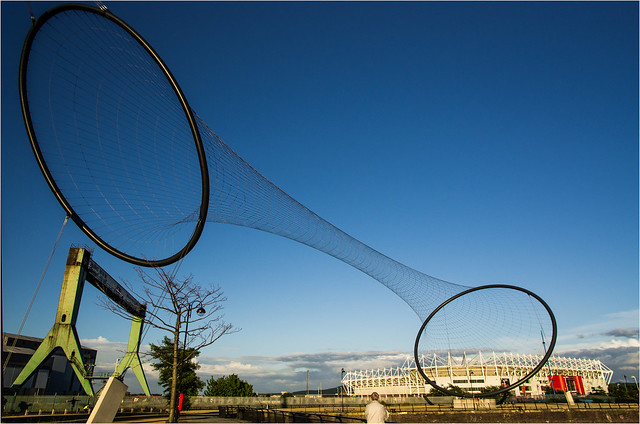 |
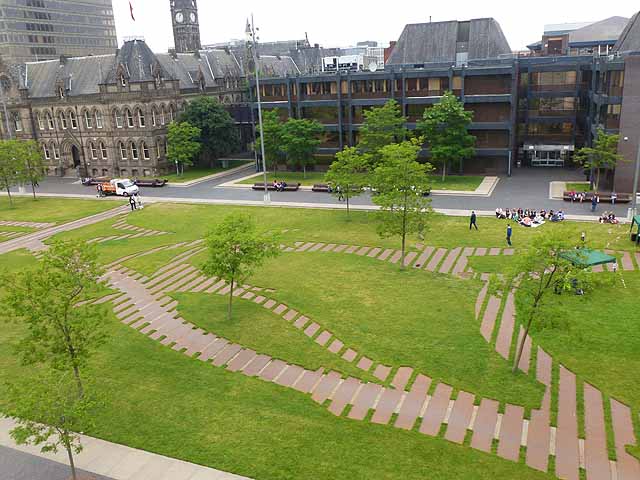 |
|
| MIMA Art Gallery | Middlesbrough Theatre | Temenos | Centre Square |
Early history
In 686, a monastic cell was consecrated by St. Cuthbert at the request of St. Hilda, Abbess of Whitby and in 1119 Robert Bruce, Lord of Cleveland and Annandale, granted and confirmed the church of St. Hilda of Middleburg to Whitby. Up until its closure on the Dissolution of the Monasteries by Henry VIII in 1537, the church was maintained by 12 Benedictine monks, many of whom became vicars, or rectors, of various places in Cleveland. The importance of the early church at "Middleburg", later known as Middlesbrough Priory, is indicated by the fact that, in 1452, it possessed four altars.
After the Angles, the area became home to Viking settlers. Names of Viking origin (with the suffix by) are abundant in the area – for example, Ormesby, Stainsby, Maltby and Tollesby were once separate villages that belonged to Vikings called Orm, Steinn, Malti and Toll, but now form suburbs of Middlesbrough. The name Mydilsburgh is the earliest recorded form of Middlesbrough's name and dates to Anglo-Saxon times (400–1000 AD), while many of the aforementioned villages appear in the Domesday Book of 1086.
Other links persist in the area, often through school or road names, to now-outgrown or abandoned local settlements, such as the medieval settlement of Stainsby, deserted by 1757, which amounts to little more today than a series of grassy mounds near the A19 road.
Development
In 1801, Middlesbrough was a small farm with a population of just 25. During the latter half of the 19th century, however, it experienced rapid growth.
The Stockton and Darlington Railway (S&DR) had been developed to transport coal from Witton Park Colliery and in County Durham, to the River Tees in the east. It had always been assumed by the investors that as the then lowest bridging point on the River Tees would be suitable to take the largest ships at the required volume. However, as the trade developed, and with competition from the Clarence Railway which had established a new port on the north side of the river at Port Clarence, a better solution was required on the south side of the river.
In 1828 the influential Quaker banker, coal mine owner and S&DR shareholder Joseph Pease sailed up the River Tees to find a suitable new site down river of Stockton on which to place new coal staithes. As a result, in 1829 he and a group of Quaker businessmen bought the Middlesbrough farmstead and associated estate, some of land, and established the Middlesbrough Estate Company. Through the company, the investors set about the development of a new coal port on the banks of the Tees nearby, and a suitable town on the site of the farm (the new town of Middlesbrough) to supply the port with labour. By 1830 the S&DR had been extended to Middlesbrough and expansion of the town was assured. The small farmstead became the site of such streets as North Street, South Street, West Street, East Street, Commercial Street, Stockton Street and Cleveland Street, laid out in a grid-iron pattern around a market square, with the first house being built in West Street in April 1830. The town of Middlesbrough was born. New businesses quickly bought up premises and plots of land in the new town and soon shippers, merchants, butchers, innkeepers, joiners, blacksmiths, tailors, builders and painters were moving in. By 1851 Middlesbrough's population had grown from 40 people in 1829 to 7,600.
The first coal shipping staithes at the port (known as "Port Darlington") were constructed just to the west of the site earmarked for the location of Middlesbrough. The port was linked to the S&DR on 27 December 1830 via a branch that extended to an area just north of the current railway station. The success of the port meant it soon became overwhelmed by the volume of imports and exports, and in 1839 work started on Middlesbrough Dock. Laid out by Sir William Cubitt, the whole infrastructure was built by resident civil engineer George Turnbull. After three years and an expenditure of £122,000 (equivalent to £9.65 million at 2011 prices), first water was let in on 19 March 1842, and the formal opening took place on 12 May 1842. On completion, the docks were bought by the S&DR.
Industrialisation
Ironstone was discovered in the Eston Hills in 1850. In 1841, Henry Bolckow, who had come to England in 1827, formed a partnership with John Vaughan, originally of Worcester, and started an iron foundry and rolling mill at Vulcan Street in the town. It was Vaughan who realised the economic potential of local ironstone deposits. Pig iron production rose tenfold between 1851 and 1856. The importance of the area to the developing iron and steel trade gave it the nickname Ironopolis.
On 21 January 1853, Middlesbrough received its Royal Charter of Incorporation, giving the town the right to have a mayor, aldermen and councillors. Henry Bolckow became mayor, in 1853.
On 15 August 1867, a Reform Bill was passed, making Middlesbrough a new parliamentary borough, Bolckow was elected member for Middlesbrough the following year.
For many years in the 19th century, Teesside set the world price for iron and steel. The steel components of the Sydney Harbour Bridge (1932) were engineered and fabricated by Dorman Long of Middlesbrough. The company was also responsible for the New Tyne Bridge in Newcastle.
Several large shipyards also lined the Tees, including the Sir Raylton Dixon & Company, which produced hundreds of steam freighters including the infamous SS Mont-Blanc, the steamship which caused the 1917 Halifax Explosion in Canada.
Middlesbrough's rapid expansion continued throughout the second half of the 19th century (fuelled by the iron and steel industry), the population reaching 90,000 by the turn of the century. The population of Middlesbrough as a county borough peaked at almost 165,000 in the late 1960s, but has declined since the early 1980s. The 2011 population estimate for the borough was 138,400, the urban area estimate was 174,700.
Irish migration to Middlesbrough
The 1871 census of England & Wales showed that Middlesbrough had the second highest percentage of Irish born people in England after Liverpool. This equated to 9.2% of the overall population of the district at the time. Due to the rapid development of the town and its industrialisation there was much need for people to work in the many blast furnaces and steel works along the banks of the Tees. This attracted many people from Ireland, who were in much need of work. As well as people from Ireland, the Scottish, Welsh and overseas inhabitants made up 16% of Middlesbrough's population in 1871.
Visit the page: Middlesbrough for references and further details. You can contribute to this article on Wikipedia.
See also on Co-Curate:
historical account of Middlesbrough from 1905.
Middlesbrough during WW2
Read about Irish migration to Middlesbrough in the 19th Century
John Vaughan (1799-1868)
Henry Bolckow (1806-1878)
Gertrude Bell (1868-1926)

from Newcastle University (youtube)
Prince George Visits Middlesbrough AKA Prince George Pays His First Visit To Middlesbrough (1933)
Pinned by Simon Cotterill

from Newcastle University (youtube)
A £512,000 'link' AKA New Bridge At Middlesbrough (1934)
Pinned by Simon Cotterill

from Newcastle University (youtube)
First Vertical Bridge In Europe (1933)
Pinned by Simon Cotterill

from Newcastle University (youtube)
In World's Biggest Dock AKA In Worlds Biggest Dock (1933)
Pinned by Simon Cotterill

from Newcastle University (youtube)
England V Wales AKA Middlesbrough (1937)
Pinned by Simon Cotterill

Co-Curate Page
Middlesbrough FC
- Overview History Middlesbrough Football Club was formed in 1876. In 1903, the club moved to Ayresome Park, their home for the next 92 years until they moved to the Riverside …
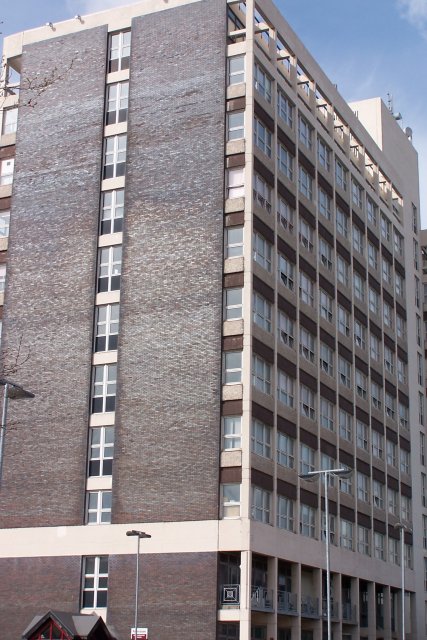
Co-Curate Page
Teesside University
- Overview About Teesside University Map Street View Buildings History: Teesside University originally began as Constantine Technical College, which was formally opened on the 2nd July, 1930, by the Prince of …

from Flickr (flickr)
Middlesbrough Heritage plaque - Grey Towers, Nunthorpe, Middlesbrough.
Pinned by Simon Cotterill
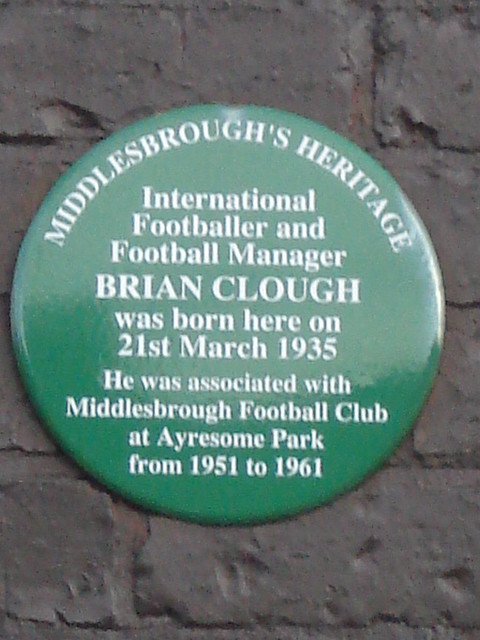
from Flickr (flickr)
Middlesbrough Heritage plaque - Birthplace of Brian Clough - Valley Road, Grove Hill, Middlesbrough
Pinned by Simon Cotterill
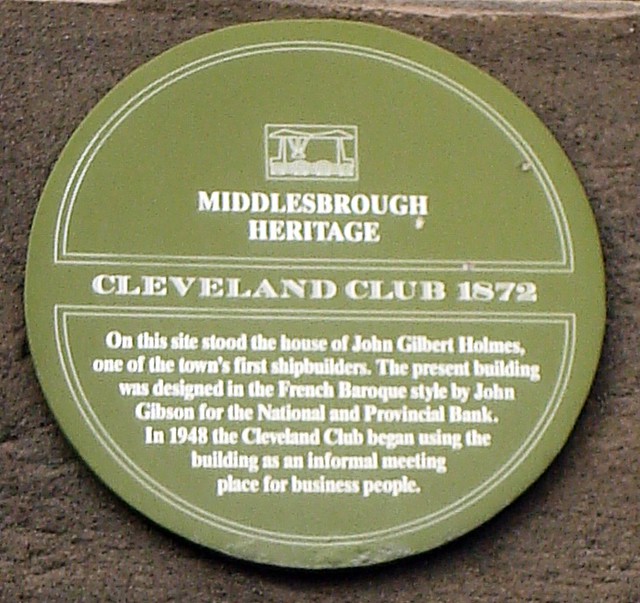
from Flickr (flickr)
Middlesbrough Heritage plaque - former National Provincial Bank
Pinned by Simon Cotterill
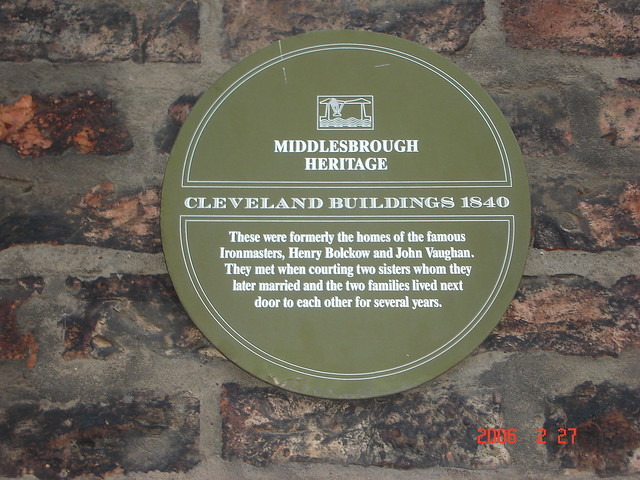
from Flickr (flickr)
Middlesbrough Heritage plaque - Cleveland Buildings, Cleveland Street, St. Hilda's, Middlesbrough
Pinned by Simon Cotterill
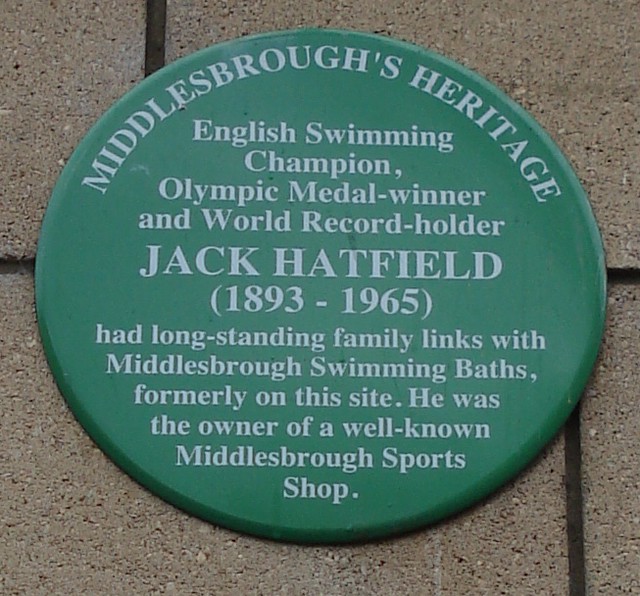
from Flickr (flickr)
Middlesbrough Heritage plaque - Jack Hatfield 1893 -1965 - on site of former Middlesbrough Swimming Baths.
Pinned by Simon Cotterill
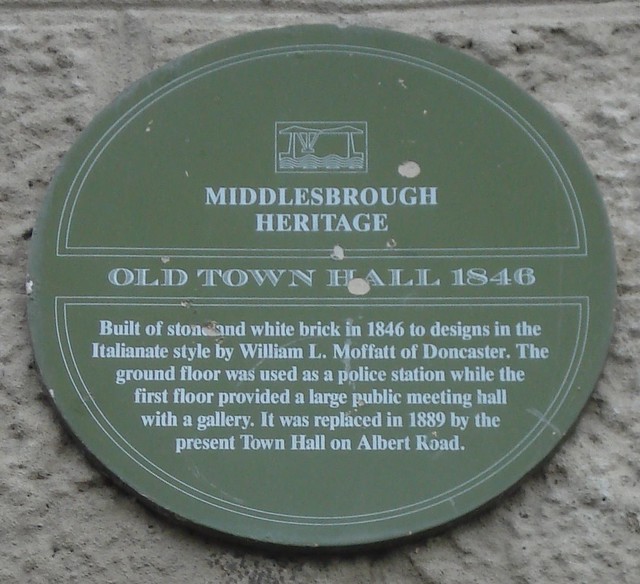
from Flickr (flickr)
Middlesbrough Heritage plaque - Old Town Hall, St Hilda's, Middlesbrough
Pinned by Simon Cotterill
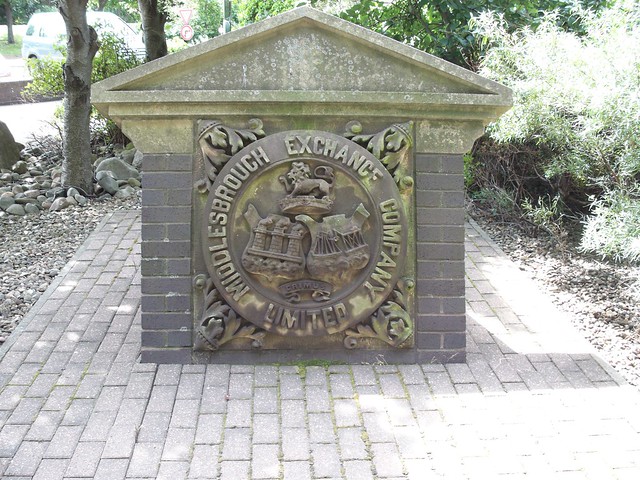
from Flickr (flickr)
Stone carving of the Seal of the Middlesbrough Exchange Company Limited.
Pinned by Simon Cotterill
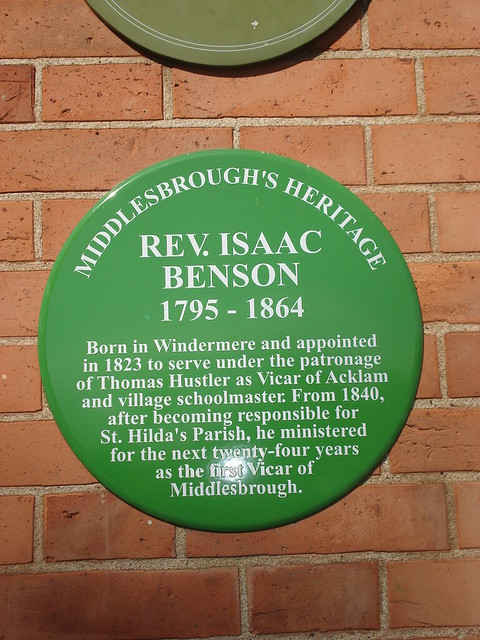
from Flickr (flickr)
Middlesbrough Heritage plaque - Rev. Isaac Benson (1795 - 1864) - on Acklam Hall
Pinned by Simon Cotterill
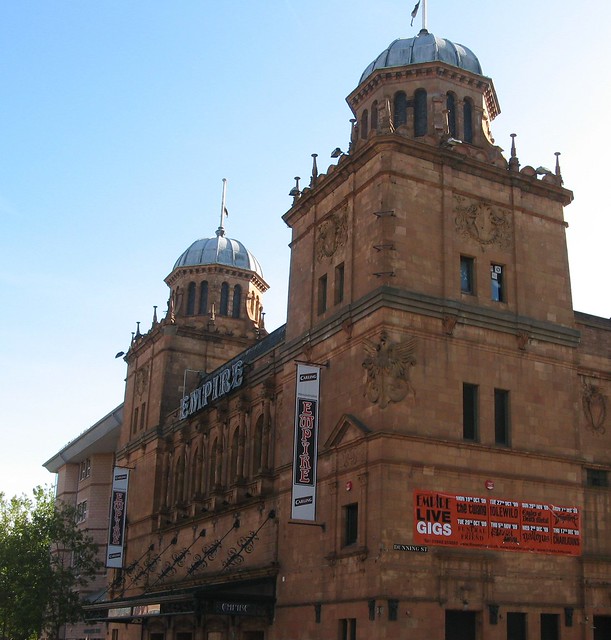
from Flickr (flickr)
The Empire Middlesbrough Historic Victorian Empire Palace Theatre Tees Valley North East
Pinned by Simon Cotterill
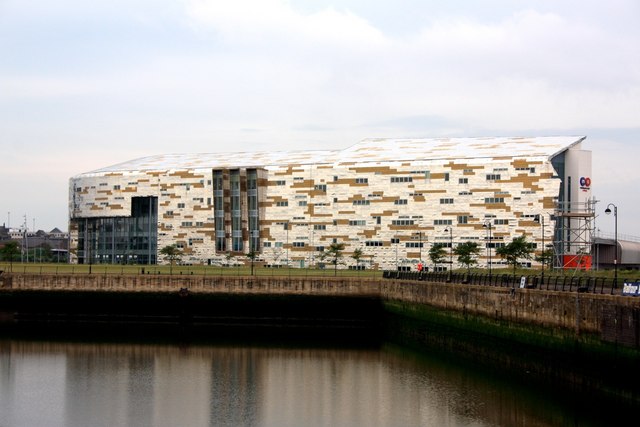
Co-Curate Page
Middlesbrough College
- Middlesbrough College was created on 1st August 1995 with the merger of Kirby College of Further Education and Acklam Sixth Form College. In 2002 there was a further merger with Teesside Tertiary College, …
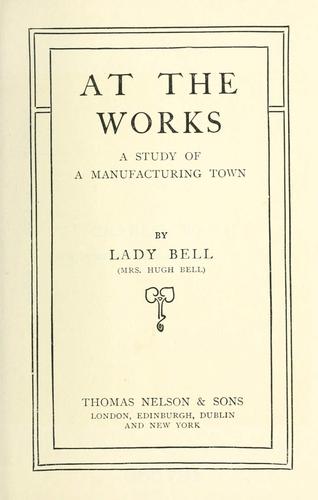
from https://openlibrary.org/books…
At the works. A study of a manufacturing town. (Lady Bell, 1911)
- Digitised version of At the works. A study of a manufacturing town (revised) by Lady Bell (Mrs. Hugh Bell). Published 1911 by Nelson in London, New York . Available as …
Added by
Simon Cotterill

from Flickr (flickr)
Being a tourist in your hometown: Things change. No longer a college
Pinned by Simon Cotterill

from Flickr (flickr)
Being a tourist in your hometown: So long since I've been over in this bit of the town and it's all changed
Pinned by Simon Cotterill

from Flickr (flickr)
Middlesbrough Heritage plaque which used to stand on the site of St Hilda's church - slide scan
Pinned by Pat Thomson

from Youtube (youtube)
DJM Aerial Solutions - Drone Video of Middlesbrough - Teesside - North Yorkshire
Pinned by Simon Cotterill

Co-Curate Page
Cleveland Port, 1848
- CLEVELAND-PORT, a hamlet, in the parish of Ormesby, union of Guisborough, W. division of the liberty of Langbaurgh, N. riding of York, 9 miles (N. by E.) from Stokesley; containing …

from Flickr (flickr)
A Proposal To Ask Where Does A Threshold Begin & End, Middlesbrough
Pinned by Rory Harvey

Co-Curate Page
Priestfields
- Overview Map Street View Priestfields is an area of Middlesbrough, located to the north-west of Ormesby and east of Park End. Middle Beck (stream) flows through the area and the …

from Youtube (youtube)
Cunard rudder castings en route to Middlesbrough (1931)
Pinned by Simon Cotterill


from Newcastle University (youtube)
Prince George Visits Middlesbrough AKA Prince George Pays His First Visit To Middlesbrough (1933)
Pinned by Simon Cotterill

from Newcastle University (youtube)
A £512,000 'link' AKA New Bridge At Middlesbrough (1934)
Pinned by Simon Cotterill

from Newcastle University (youtube)
First Vertical Bridge In Europe (1933)
Pinned by Simon Cotterill

from Newcastle University (youtube)
In World's Biggest Dock AKA In Worlds Biggest Dock (1933)
Pinned by Simon Cotterill

from Newcastle University (youtube)
England V Wales AKA Middlesbrough (1937)
Pinned by Simon Cotterill

Co-Curate Page
Middlesbrough FC
- Overview History Middlesbrough Football Club was formed in 1876. In 1903, the club moved to Ayresome Park, their home for the next 92 years until they moved to the Riverside …

Co-Curate Page
Teesside University
- Overview About Teesside University Map Street View Buildings History: Teesside University originally began as Constantine Technical College, which was formally opened on the 2nd July, 1930, by the Prince of …

from Flickr (flickr)
Middlesbrough Heritage plaque - Grey Towers, Nunthorpe, Middlesbrough.
Pinned by Simon Cotterill

from Flickr (flickr)
Middlesbrough Heritage plaque - Birthplace of Brian Clough - Valley Road, Grove Hill, Middlesbrough
Pinned by Simon Cotterill

from Flickr (flickr)
Middlesbrough Heritage plaque - former National Provincial Bank
Pinned by Simon Cotterill

from Flickr (flickr)
Middlesbrough Heritage plaque - Cleveland Buildings, Cleveland Street, St. Hilda's, Middlesbrough
Pinned by Simon Cotterill

from Flickr (flickr)
Middlesbrough Heritage plaque - Jack Hatfield 1893 -1965 - on site of former Middlesbrough Swimming Baths.
Pinned by Simon Cotterill

from Flickr (flickr)
Middlesbrough Heritage plaque - Old Town Hall, St Hilda's, Middlesbrough
Pinned by Simon Cotterill

from Flickr (flickr)
Stone carving of the Seal of the Middlesbrough Exchange Company Limited.
Pinned by Simon Cotterill

from Flickr (flickr)
Middlesbrough Heritage plaque - Rev. Isaac Benson (1795 - 1864) - on Acklam Hall
Pinned by Simon Cotterill

from Flickr (flickr)
The Empire Middlesbrough Historic Victorian Empire Palace Theatre Tees Valley North East
Pinned by Simon Cotterill

Co-Curate Page
Middlesbrough College
- Middlesbrough College was created on 1st August 1995 with the merger of Kirby College of Further Education and Acklam Sixth Form College. In 2002 there was a further merger with Teesside Tertiary College, …

from https://openlibrary.org/books…
At the works. A study of a manufacturing town. (Lady Bell, 1911)
- Digitised version of At the works. A study of a manufacturing town (revised) by Lady Bell (Mrs. Hugh Bell). Published 1911 by Nelson in London, New York . Available as …
Added by
Simon Cotterill

from Flickr (flickr)
Being a tourist in your hometown: Things change. No longer a college
Pinned by Simon Cotterill

from Flickr (flickr)
Being a tourist in your hometown: So long since I've been over in this bit of the town and it's all changed
Pinned by Simon Cotterill

from Flickr (flickr)
Middlesbrough Heritage plaque which used to stand on the site of St Hilda's church - slide scan
Pinned by Pat Thomson

from Youtube (youtube)
DJM Aerial Solutions - Drone Video of Middlesbrough - Teesside - North Yorkshire
Pinned by Simon Cotterill

Co-Curate Page
Cleveland Port, 1848
- CLEVELAND-PORT, a hamlet, in the parish of Ormesby, union of Guisborough, W. division of the liberty of Langbaurgh, N. riding of York, 9 miles (N. by E.) from Stokesley; containing …

from Flickr (flickr)
A Proposal To Ask Where Does A Threshold Begin & End, Middlesbrough
Pinned by Rory Harvey

Co-Curate Page
Priestfields
- Overview Map Street View Priestfields is an area of Middlesbrough, located to the north-west of Ormesby and east of Park End. Middle Beck (stream) flows through the area and the …

from Youtube (youtube)
Cunard rudder castings en route to Middlesbrough (1931)
Pinned by Simon Cotterill

Tees Valley
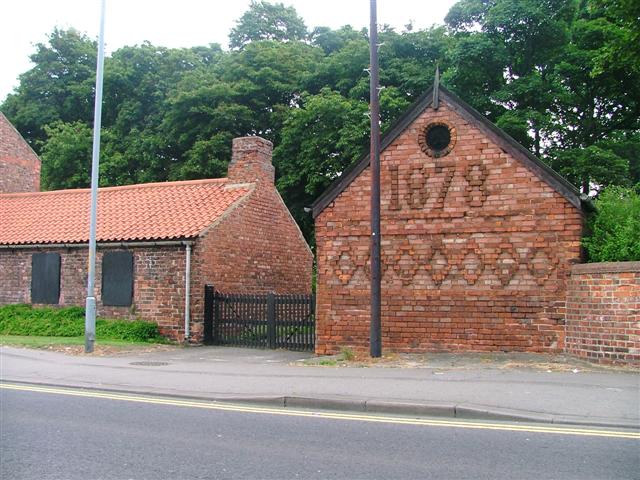
Acklam
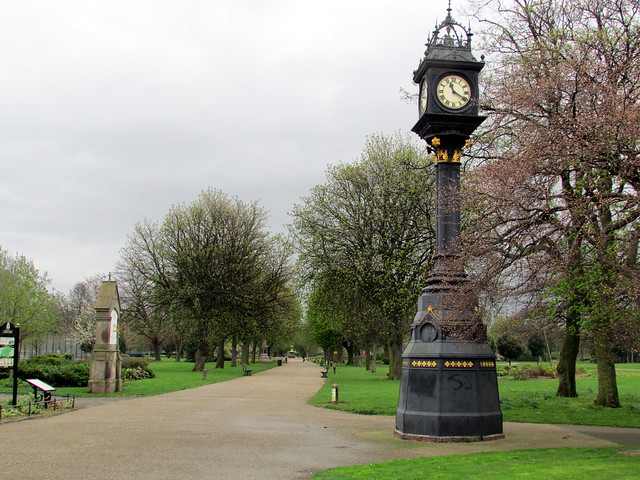
Albert Park, Middlesbrough
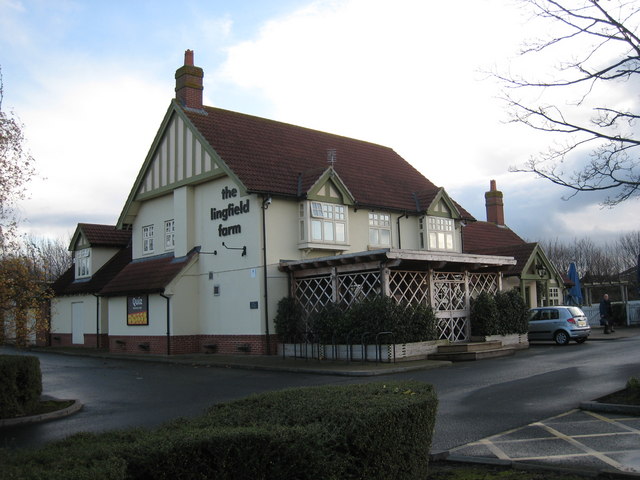
Coulby Newham

Easterside
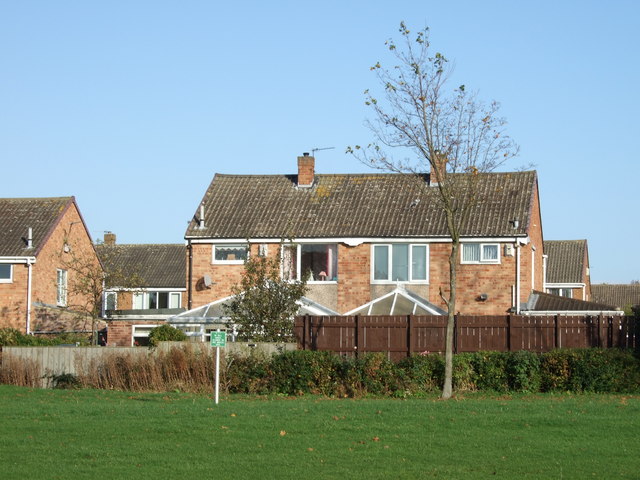
Hemlington
Historic Buildings and Monuments in Middlesbrough

Historical Accounts of Middlesbrough

Linthorpe

Map and Aerial View of Middlesbrough
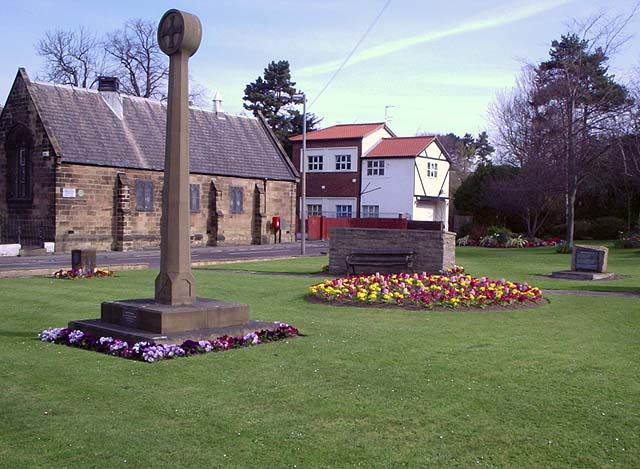
Marton-in-Cleveland

Middlehaven
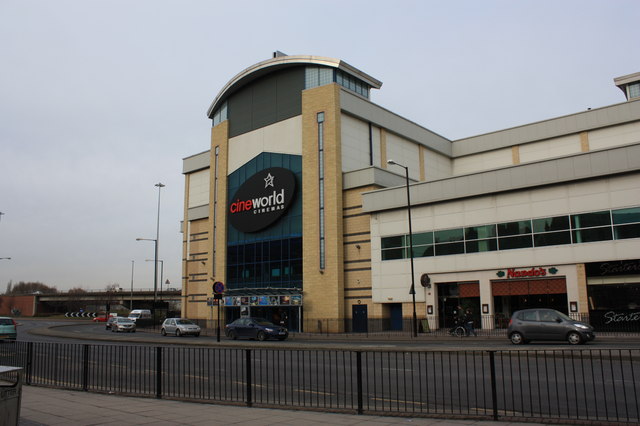
Middlesbrough - Town Centre

Middlesbrough at War
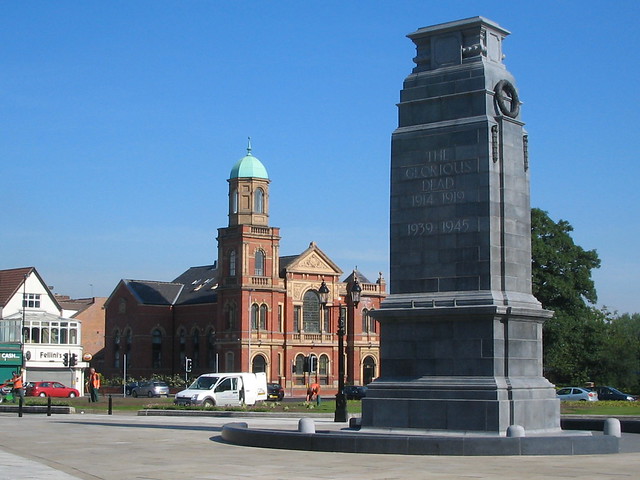
Middlesbrough during WW2

Middlesbrough Parish, 1848
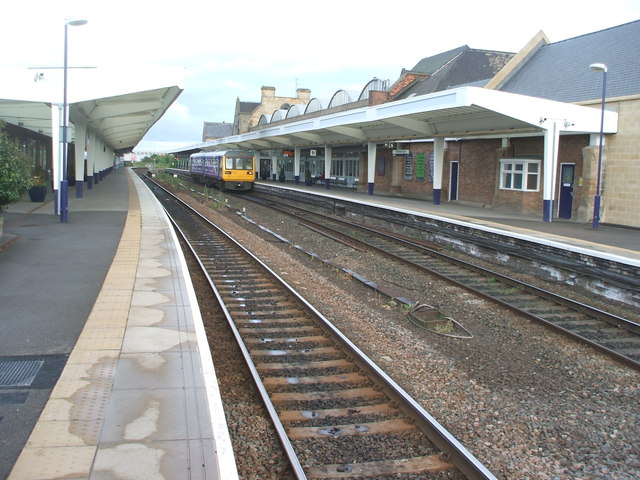
Middlesbrough Railway Station

Netherfields, Middlesbrough
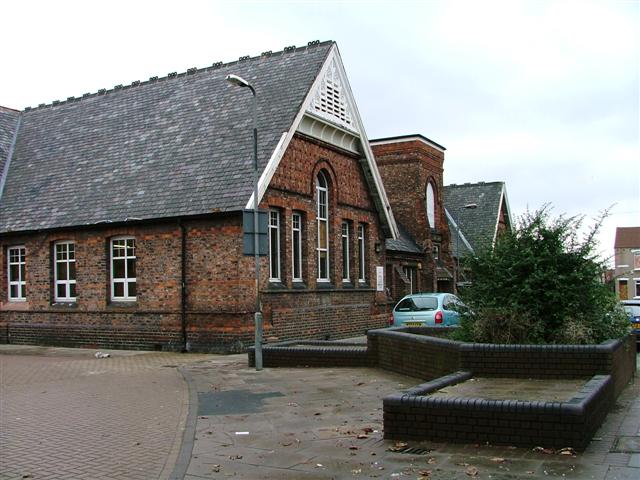
North Ormesby

Notable People, Middlesbrough
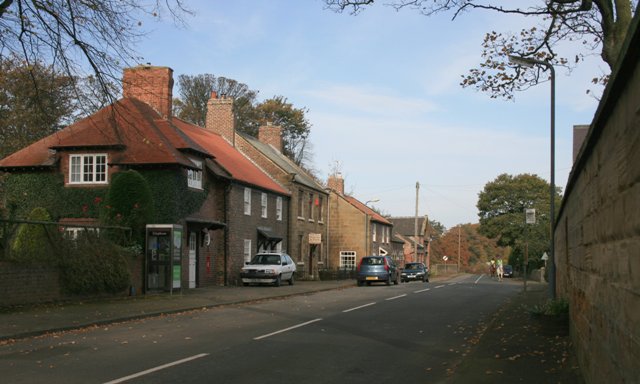
Nunthorpe

Ormesby
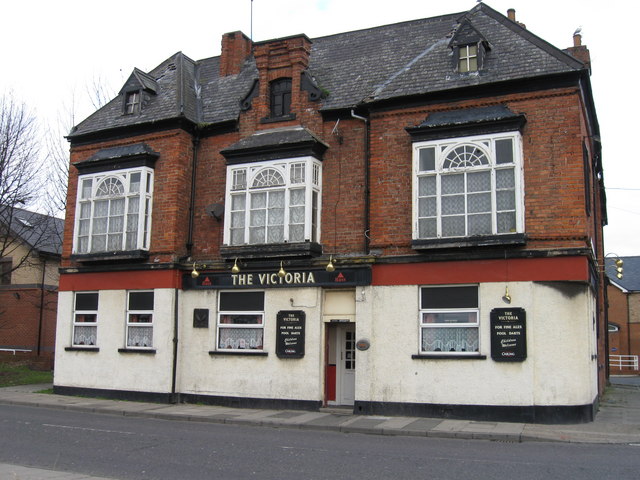
South Bank, Middlesbrough
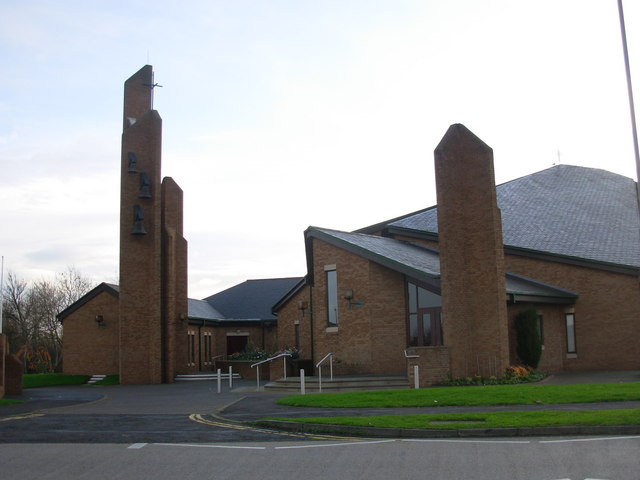
St Mary's Cathedral, Middlesbrough
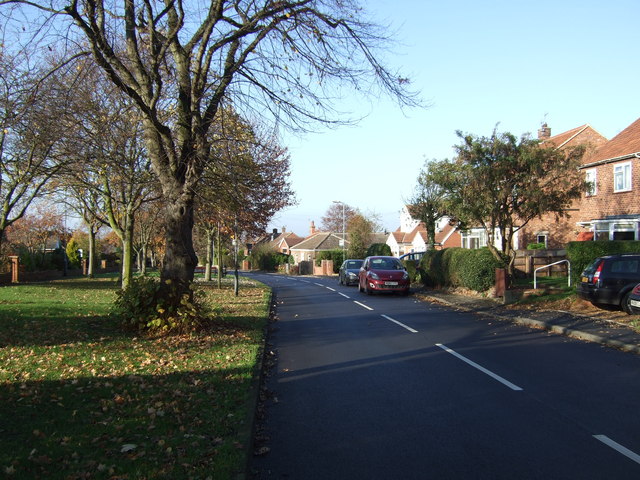
Stainton, Middlesbrough

Tees Newport Bridge
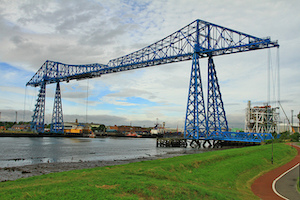
Tees Transporter Bridge


